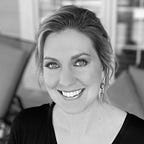Inquiry-Based Learning: How to Start (and Where to Go!)
Want to implement and assess inquiry-based learning in your classroom or school? Consider applying Hall & Hord’s “Levels of Use” framework.
During the last school year, my high school began a campus-wide shift to inquiry-based learning. Spearheaded by a like-minded group of teachers and administrators, the shift started with visits from inquiry guru Trevor Mackenzie, books and articles, instructional rounds, professional development workshops, and stakeholder meetings with students and families. Nearly two years later, all staff members have been exposed to inquiry-based learning, but staff implementation of this learning model varies in extent and efficacy.
To help teachers and administrators make (and assess) progress in teaching and learning through inquiry, I’ve adapted Hall and Hord’s (2006) “Levels of Use” behavioral framework for innovation. Through the “Inquiry & Levels of Use” infographic pictured above, educators can reflect on and set goals for creating inquiry-based classrooms and schools.
Nonuse
Nonuse (Level 0)
An educator at the nonuse level is unfamiliar with inquiry-based learning and has demonstrated little interest in familiarizing themselves with inquiry-based learning, even if opportunities for familiarization exist within the school.
Orientation (Level 1)
An educator at the orientation level has started exploring inquiry-based learning, including its theoretical origins in the work of John Dewey. In addition, this educator has begun to consider the role of the teacher and students in an inquiry-based classroom.
An important consideration for professional development centered on inquiry-based learning involves teachers’ expectations for students. In a study on teachers’ adoption of inquiry-based learning practices, Voet & De Wever (2019) found that teachers with low expectations for students negatively impacted teachers’ use of inquiry-based learning activities in the classroom. Therefore, the researchers contend, professional development opportunities for teachers should focus on reframing teacher expectations of students’ ability to engage in inquiry-based learning.
Preparation (Level 2)
An educator at the preparation level is getting ready to implement an inquiry-based activity or lesson. This activity might involve a provocation, an experiment, or even a virtual field trip.
Use
Mechanical (Level 3)
An educator shifts from non-use to use at the mechanical level, which occurs when an educator has started implementing inquiry-based activities or lessons. Because the educator’s efforts are focused on short-term rather than long-term applications of inquiry, their activities and lessons are often disjointed and/or superficial.
Routine (Level 4)
An educator at the routine level is regularly using inquiry-based activities and lessons but is not engaging in reflection to improve practice.
Refinement (Level 5)
An educator at the refinement level engages in reflection and begins to vary inquiry-based activities, lessons, and projects to benefit the students in their classroom. These variations are based on the teacher’s knowledge of both short-term and long-term consequences.
Integration (Level 6)
At the integration level, an educator collaborates with like-minded colleagues to create inquiry-based activities, lessons, and projects to benefit students in their collective sphere of influence.
One way in which the educators on my campus are integrating inquiry is through team teaching. This particular team-teaching model, the Next Education Workforce, was developed by the Mary Lou Fulton Teachers College at Arizona State University as a means to retain teachers by drawing on the distributed expertise of educators in a shared classroom environment. (To see this team-teaching model in action at our school, click here.)
Renewal (Level 7)
An educator at the renewal level consistently reevaluates their use of inquiry-based learning, significantly modifies curricula to achieve increased impact on students, continually reads the research on best practices related to inquiry-based learning, and sets new goals for self and students.
From “If” to “How”
As Hall & Hord point out in their book, evaluating the implementation of any innovation in a classroom or school isn’t a matter of asking if implementation has occurred, but how implementation has occurred. By adopting the “Levels of Use” framework for inquiry-based learning, educators are empowered to reflect on 1) their efficacy in creating inquiry-based learning environments and 2) how to support colleagues in increasing their levels of use of inquiry. The latter, in particular, is critical in taking inquiry-based learning from a handful of classrooms to the entire school.
